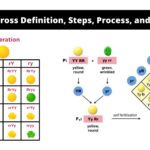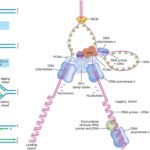IB Biology 11 Views 1 Answers
Sourav PanLv 9November 9, 2024
How do the endoplasmic reticulum and Golgi apparatus in hepatocytes contribute to the production of plasma proteins?
How do the endoplasmic reticulum and Golgi apparatus in hepatocytes contribute to the production of plasma proteins?
Please login to save the post
Please login to submit an answer.
Sourav PanLv 9May 15, 2025
The endoplasmic reticulum (ER) and Golgi apparatus in hepatocytes play crucial roles in the synthesis and processing of plasma proteins, which are essential for various physiological functions, including blood clotting, immune response, and maintaining oncotic pressure. Here’s how these organelles contribute to the production of plasma proteins:
Role of the Endoplasmic Reticulum (ER)
- Synthesis of Proteins:
- The rough endoplasmic reticulum (RER) is studded with ribosomes on its cytoplasmic surface, which are responsible for synthesizing proteins destined for secretion or for use in membranes. In hepatocytes, this includes key plasma proteins such as albumin, fibrinogen, and various clotting factors.
- Proteins synthesized on the RER are translocated into the lumen of the ER, where they undergo initial folding and modifications. This process is critical because only properly folded proteins are transported to the next stage.
- Protein Folding and Quality Control:
- The ER contains chaperone proteins that assist in the proper folding of newly synthesized proteins. If proteins misfold, they can trigger an unfolded protein response (UPR), which can reduce overall protein synthesis and enhance the ER’s capacity to fold proteins correctly.
- Initial Glycosylation:
- As proteins enter the ER lumen, they undergo N-linked glycosylation, where sugar moieties are added to specific asparagine residues. This modification is essential for protein stability and function.
- Transport to Golgi Apparatus:
- Once properly folded and modified, proteins are packaged into vesicles that bud off from the ER and are transported to the Golgi apparatus for further processing.
Role of the Golgi Apparatus
- Further Modifications:
- The Golgi apparatus consists of a series of stacked membranes where proteins received from the ER undergo extensive post-translational modifications. This includes further glycosylation (both N-linked and O-linked), phosphorylation, and sulfation. These modifications are crucial for determining the final destination and function of plasma proteins.
- Sorting and Packaging:
- The Golgi apparatus sorts proteins into different vesicles based on their final destinations—some are directed to lysosomes, others to the plasma membrane, and many are secreted into the bloodstream as plasma proteins. The trans Golgi network is particularly important for this sorting process.
- Secretion of Plasma Proteins:
- After processing in the Golgi, vesicles containing plasma proteins bud off from the trans face. These vesicles transport their cargo to various locations; those destined for secretion fuse with the plasma membrane to release their contents into circulation
0
0 likes
- Share on Facebook
- Share on Twitter
- Share on LinkedIn
0 found this helpful out of 0 votes
Helpful: 0%
Helpful: 0%
Was this page helpful?




